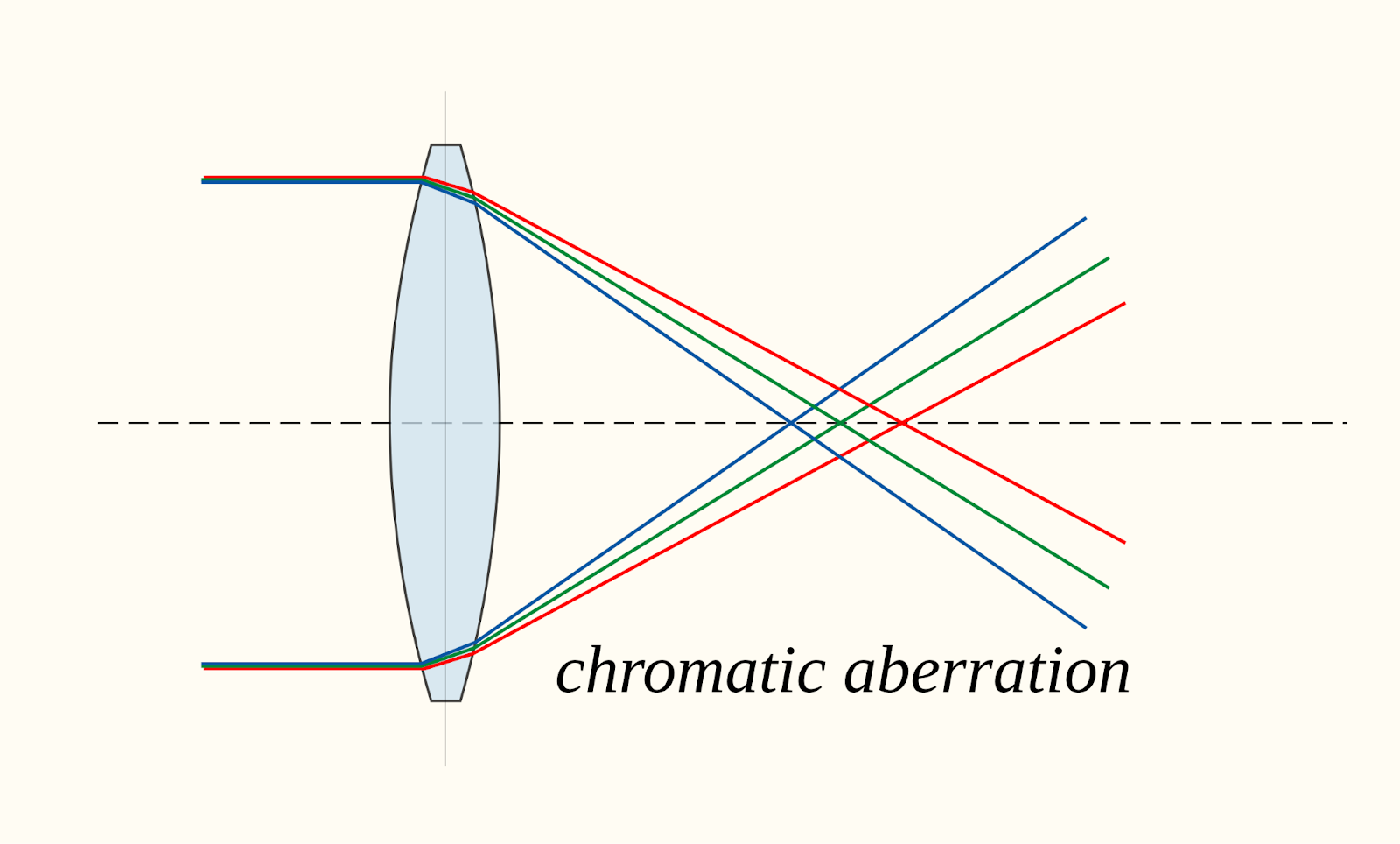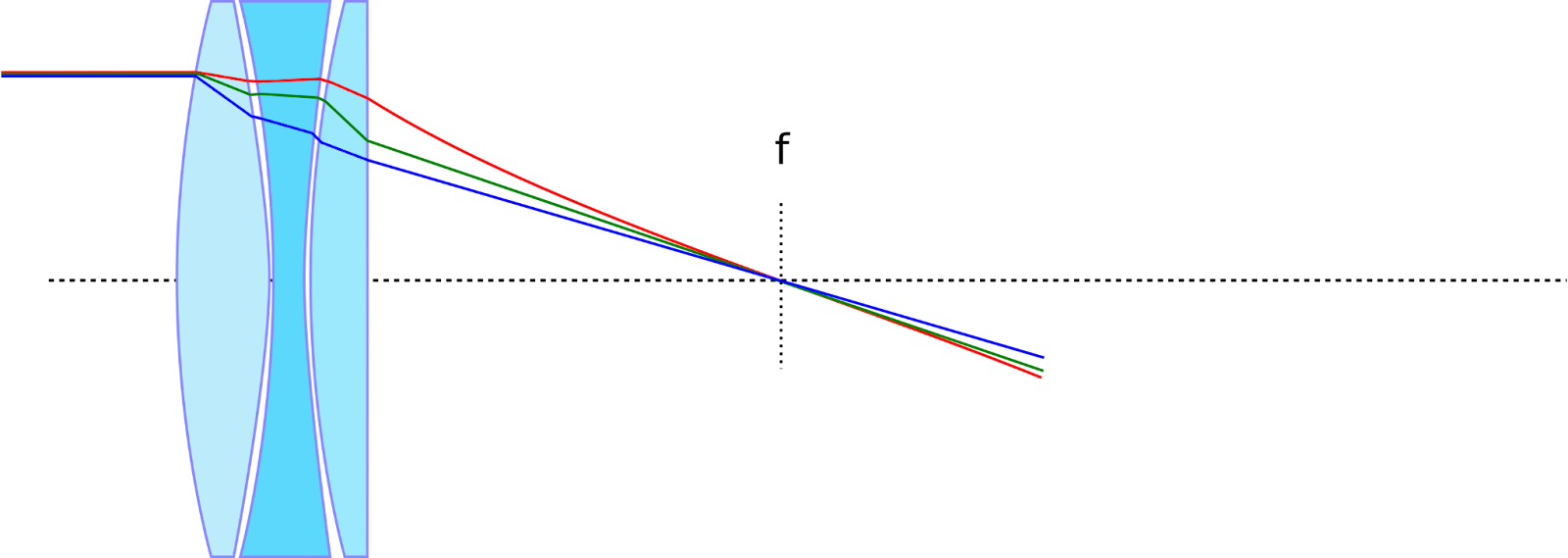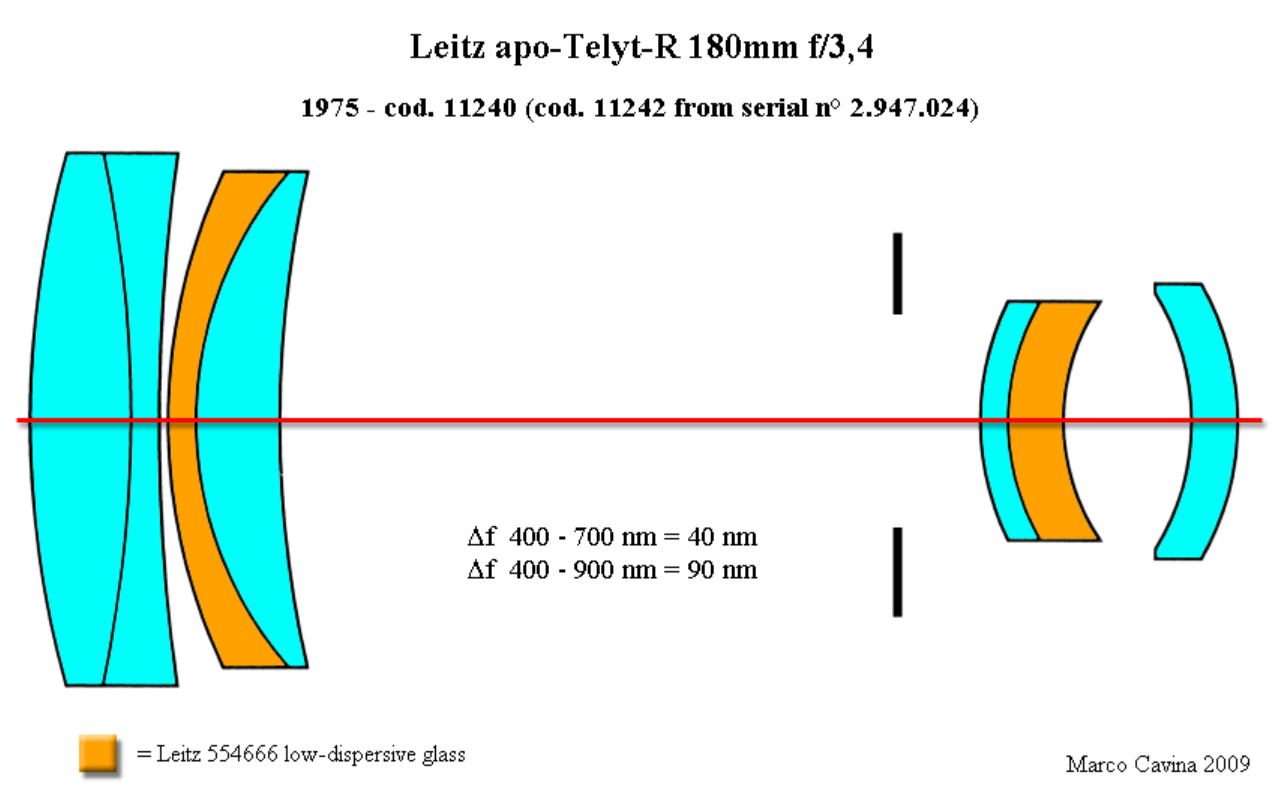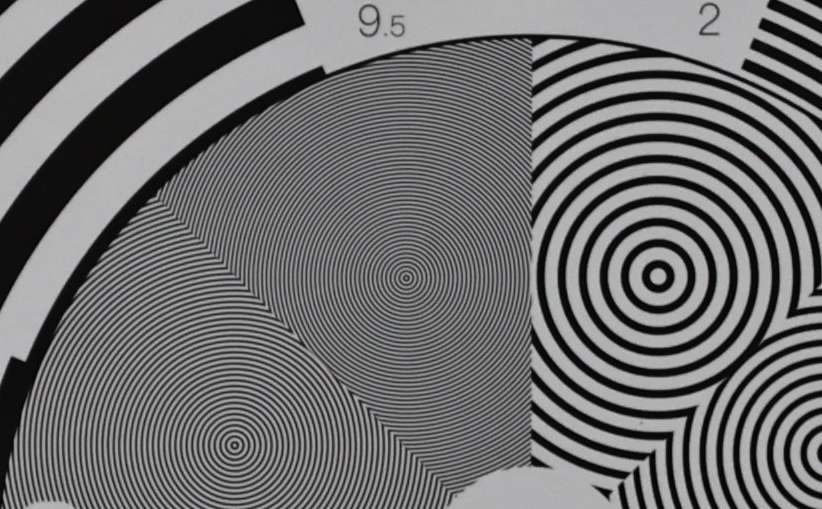The Principle of Chromatic Aberration
In the field of optical engineering, the design of a lens is a complex exercise in eliminating physical imperfections. The primary obstacle to achieving a perfectly accurate optical system is the phenomenon of aberration. Aberrations are systematic deviations from ideal image, governed by the laws of refraction, diffraction, and dispersion as light crosses through a series of optical elements. For modern cinema lenses, represent the absolute pinnacle of optical engineering, designed for empirical accuracy, minimal aberration, and flawless image capture. Chromatic Aberration is one of many optical aberrations that need to be adjusted.
Chromatic aberration is a fundamental consequence of physics — the principle of dispersion. When white light passes through a glass lens element, it acts like a prism, bending the light into different colors. Different wavelengths (colors) of light bend by different amounts. Short wavelengths (blue and violet light) are refracted more strongly than longer wavelengths (red light). This means that even with perfect, precise focusing, these different colors will not converge at the exact same point on the camera's sensor. This failure to focus all colors to a single point is the defining "lens defect" known as chromatic aberration.

Source:Wikipedia – Chromatic Aberration (CA)
Chromatic aberration leads to color fringing around the subject. In real-world practice, this most commonly appears as purple/magenta or green/cyan halos. The color you see depends on the type of chromatic aberration and its direction relative to the image center. This fringing is most visible in high contrast areas of the image. For example, along the sharp edges of dark objects against a bright background, such as tree branches against a cloudy sky or the sharp black edges of a building.

Chromatic Aberration on the Edge of Gooses
A key characteristic of chromatic aberration is that its visibility is heavily influenced by the lens's aperture setting. A wider aperture allows light to pass through the entire width of the lens elements, including the edges. The curvature of spherical lenses is most pronounced at their edges, and it is in these zones that the dispersive effect—the prism-like splitting of light—is strongest. By using a wider aperture, you are effectively magnifying the effect of the lens's optical flaws by engaging the most imperfect parts of the glass. Stopping down the lens to a smaller aperture (e.g., f/8 or f/11) acts as a simple cure. It blocks the light rays from the extreme edges of the lens, allowing only the light passing through the more optically stable center to reach the sensor, thereby significantly reducing the visibility of chromatic aberration.
Optical Solution to Chromatic Aberration
The pursuit of optical purity drives lens manufacturers to develop advanced solutions like apochromatic (APO) designs and Extra-Low Dispersion (ED) glass elements. These technologies aim to bring red, green, and blue light wavelengths into a common focus through precise physical engineering, ensuring the sharpest, most color-accurate image possible from the moment light enters the lens.
APO
An apochromatic (APO) lens is an advanced optical design engineered to eliminate chromatic aberration. This flaw occurs because a simple lens refracts different wavelengths of light to slightly different focal points, causing color fringing and reducing sharpness. Ernst Abbe invented the apochromatic lens (apo lens) in 1868, and used it for microscopes. The foundational correction began with the achromatic doublet, which combines a positive crown glass element and a negative flint glass element. Each glass type possesses a distinct Abbe number, a scientific measure of its dispersion—or ability to separate light. By balancing these dispersions, designers could bring two wavelengths (typically red and blue) to a common focus, significantly reducing chromatic aberration. The residual error, where the green wavelength remained slightly out of focus.

Source: Wikipedia – Apochromat
True apochromatic design addresses this limitation. It aims to bring three specific wavelengths (typically red, green, and blue) to a single focal point. This is achieved by incorporating a third optical element crafted from low dispersion (LD) glass, which has an exceptionally low Abbe number. This LD element corrects the remaining color error, allowing all three primary wavelengths to converge precisely.
In the mid-20th century, this principle was masterfully applied in lenses for reprographic and technical applications where optical fidelity was paramount, demonstrating the rigorous scientific standard of APO correction. The Leitz APO-Telyt-R 180mm f/3.4, released in 1975, is widely considered the first publicly available APO (apochromatic) lens in photography.

Optically, APO lenses produce images that are clinically sharp and devoid of color artifacts. This creates a uniquely pure, transparent rendering with high micro-contrast. Without adjustment for color fringing, there would also be a colorful halo around the out-of-focus bokeh. However, the precise correction of chromatic aberration yields exceptionally smooth and neutral bokeh, with a seamless transition from in-focus to out-of-focus areas.

Bokeh of 40mm Vespid Prime, a lens with apo design
ED glass
Extra-low dispersion (ED) glass takes the principle of dispersion reduction to a far more effective level. It’s considered as a type of low dispersion (LD) glass, and it has provided a more significant correction in aberration. Scientifically, it is engineered to have an exceptionally high Abbe number, meaning it has very low dispersion. Its refractive index changes very little across the visible spectrum of light. In other words, it bends red, green, and blue light rays at nearly the same angle, preventing them from splitting apart in the first place.

Comparison of ed glass and ordinary lens
When an ED glass element is strategically paired with a standard optical glass element within a lens design, they work in concert to cancel out each other's dispersion properties. The standard glass provides the primary focusing power, while the ED element acts as a precise corrective component. It ensures that all three primary wavelengths of light (red, green, and blue) are forced to converge at a single, common point on the sensor. This trio convergence is known as apochromatic correction, and it is the gold standard for eliminating chromatic aberration, delivering images with stunning sharpness and color fidelity.
Nikon was the first adept ED glass in lens design. They recognized that the problem of chromatic aberration was exponentially worse in long telephoto lenses, which require extreme precision over a great distance. In 1971, Nikon introduced the NIKKOR-H 300mm f/2.8, the first photographic lens to incorporate ED glass. It made large-aperture telephoto lenses not just possible, but practical for professional use in sports and wildlife photography, where both subject isolation and critical sharpness are paramount.
Eliminating Chromatic Aberration in Modern Cinema Lenses
Once a rarity, APO design and ED glass are now integrated into many modern lenses. Utilizing these two techniques is considered as the main measurement to eliminate chromatic aberration.
For cinema lenses, it’s important to provide a tool to achieve a perfect optical balance. The DZOFILM Vespid Prime 2 lenses exemplify this synthesis. By incorporating APO design, it eliminates chromatic aberration and produces images of exceptional color purity and sharpness devoid of color fringing. Even at wide apertures of T1.9, Vespid Prime 2 produces a very sharp and clean image with little aberration. This scientific approach ensures clean, accurate image reproduction. Technical perfection alone does not define a great cinema lens. The true mastery of the Vespid Prime 2 design lies in its simultaneous and careful management of other optical aberrations. Rather than seeking to eliminate all character in pursuit of sterile correction, the designers have artfully preserved and sculpted certain qualities. APO design with the lens element also controls the behavior of spherical aberration and astigmatism, resulting in the lenses rendering out-of-focus elements not as distracting artifacts, but as smooth, creamy bokeh. This graceful focus falloff—the transition from sharp focus to soft blur—is engineered to be aesthetically pleasing, guiding the viewer's eye and contributing to the emotional depth of a scene.

35mm Vespid 2 resolution test @T1.9 300% zoom in
Controlling chromatic aberration is significantly more challenging in lenses with larger apertures, which is why severe color fringing was common in vintage lenses with apertures like f/1.4. As a result, using a large aperture was often associated with poorer image quality. To compensate, many cinematographers would "stop down" their fast lenses by two stops from wide open. This practice improves overall performance by increasing sharpness and reducing chromatic aberration. However, modern large-aperture lenses have seen great improvements in controlling this flaw. This progress results from combining multiple ED (Extra-low Dispersion) and LD (Low-dispersion) glass elements with apochromatic (APO) optical design.

Shot by Arles Prime
For example, in the DZOFILM Arles Prime, optical designers use a combination of low-dispersion optical materials to achieve imperceptible color fringing, even at a wide-open aperture of T1.4. This ensures the image remains clean and sharp across the entire frame. Consequently, cinematographers no longer need to stop down to T2.8 or T4 solely to obtain an image with less chromatic aberration. Now, it’s possible to film at T1.4 to achieve a beautiful, shallow depth of field and stunning background blur, while still preserving a critically sharp image free from color fringing.

Shot by X-Tract Probe Zoom
The ongoing advancement in extra-low dispersion (ED) glass technology has become a critical enabler for novel optical designs that must perform under unprecedented constraints. A prime example is found in modern compact probe lenses, where extreme miniaturization and complex optical formulas inherently cause various aberrations, presenting a significant challenge to achieving clean and sharp image quality. TheDZOFILM X-tract 18-28mm T/8 0° zoom probe lens exemplifies this engineering solution, incorporating 6 ED glass elements into its design. This lens's high maximum magnification ratio of 2.1:1 imposes a stringent requirement for resolution and the reproduction of high-frequency details. The strategic integration of multiple ED elements is essential for controlling chromatic aberration across the zoom range. This correction ensures that chromatic light rays converge at a common focal plane, thereby yielding images with negligible color fringing and permitting accurate capture of fine subject detail.
